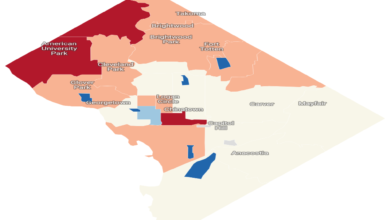Alaska’s hunger problem worsens as issues with food stamps persist.

The pandemic, inflation, and the aftermath of a typhoon have worsened the hunger crisis in Alaska, especially for those relying on government assistance. Many Alaskans in need of food stamp benefits have been left waiting for months, exacerbating the situation.

The prolonged delay in the delivery of food stamp benefits has worsened the longstanding hunger crisis in Alaska, where thousands of people rely on government assistance. The backlog, which started in August last year, has been aggravated by the pandemic, inflation, and a typhoon that destroyed fish stocks and fishing equipment.
This issue is particularly alarming in a state where many remote communities, including Alaska Native villages, are not connected by roads and have to rely on expensive barge or airplane shipments for their food supply. Before the backlog began, around 13% of Alaska’s population of roughly 735,000 received benefits from the Supplemental Nutrition Assistance Program (SNAP).
“People are struggling and having to make choices of getting food or getting heating fuel,” said Daisy Lockwood Katcheak, city administrator in Stebbins, an Alaska Native village of 634 people, more than 400 miles (644 kilometers) northwest of Anchorage.
Due to food shortages and high inflation, the city has utilized $38,000, which was initially raised for a children’s spring carnival, to purchase essential supplies for its residents. Furthermore, the community located on the western coast of Alaska is facing the aftermath of a typhoon that destroyed a significant amount of fish and fishing boats, exacerbating the existing issues with the food stamp program.
The Alaskan legislators have taken action in response to the state’s slow response to providing aid to low-income individuals. The state has faced lawsuits due to its alleged mishandling of the food stamps program and assistance program for the elderly, blind, and disabled.
To address the issue, Republican Governor Mike Dunleavy has authorized $1.7 million to provide relief to the affected communities. Additionally, lawmakers have approved emergency funding to hire staff to handle the increasing number of cases, as food banks report the highest demand they have ever seen. It is worth noting that Alaska is almost two and a half times larger than Texas.
“We know a lot of people that are not eating multiple meals a day; they’ve drawn down to maybe a single meal,” said Anthony Reinert, director of programs at the Food Bank of Alaska. There has always “been a baseline of hunger in Alaska. But it’s spread and expanded pretty significantly in the last six months.”
The hunger crisis in Alaska has arisen due to a series of unfortunate events that have compounded over time. These challenges have been further exacerbated by staffing and technology-related issues within the state health department.
The suspension of the regular renewal process for SNAP benefits, a federal program that is managed by states, during the pandemic has been a key contributor to the problem. However, the situation became worse when the state lifted its public health emergency in July of last year and reinstated recertification requirements for SNAP. This led to a significant increase in the number of applications, causing an overload on the system.
By MARK THIESSEN and BECKY BOHRER Associated Press




